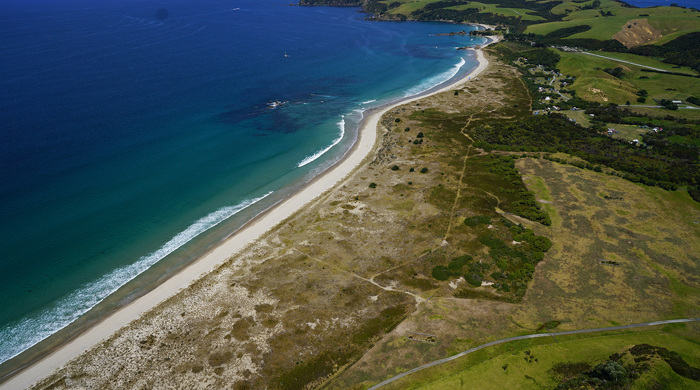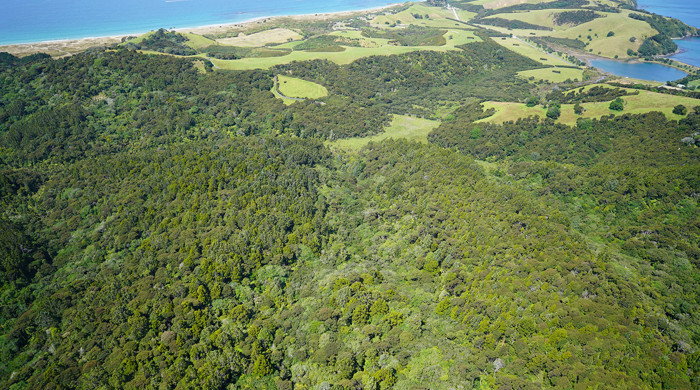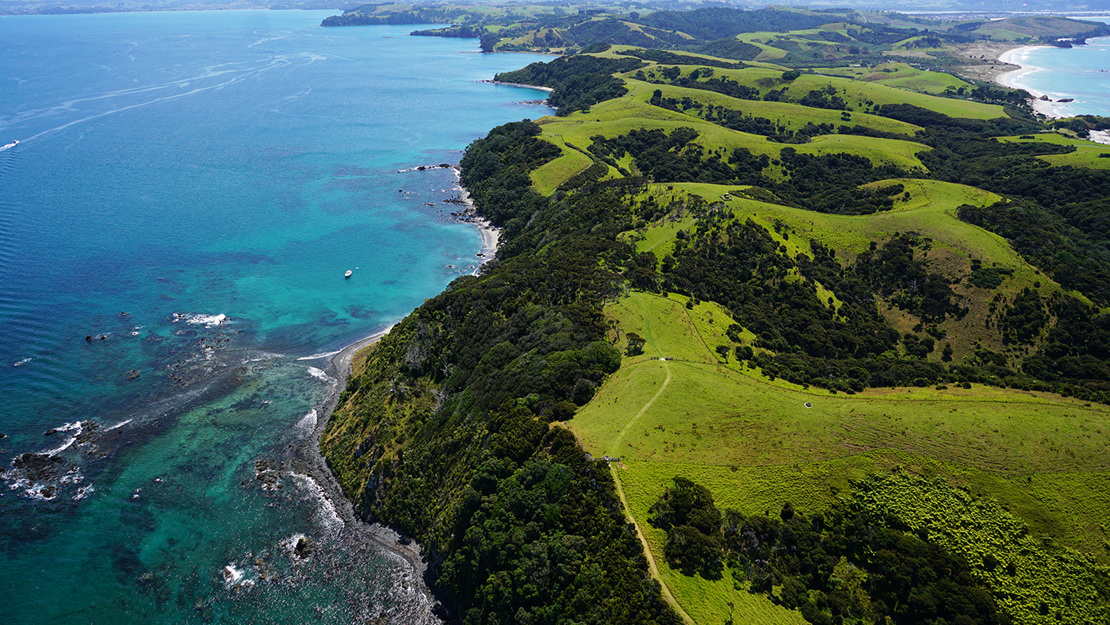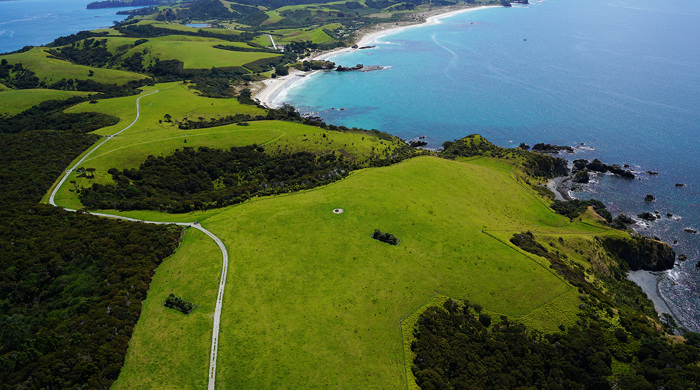Takatu and Tāwharanui Open Sanctuary
Size: 394 hectares
Site description and location
The Takatu and Tāwharanui Open Sanctuary biodiversity focus area is situated on Takatu Peninsula, east of Warkworth. A marine reserve adjoins Tāwharanui Open Sanctuary along its north coast.
This biodiversity focus area includes a diverse range of habitats on the regional park land including sand dunes, forest, scrub and freshwater wetlands.
Significant areas of forest and wetland outside of the sanctuary also contribute important habitat value are included in this biodiversity focus area.

Tāwharanui Open Sanctuary
Tāwharanui Regional Park, at the eastern end of the peninsula, became Tāwharanui Open Sanctuary in 2004. It is protected by a predator-proof fence across the peninsula. Pest animals were eradicated from inside the fence and now native species flourish.
Since its establishment, there have been several reintroductions or translocations to create more secure populations of highly threatened native species, including of takahē.
Reintroduced and translocated species include:
- North Island brown kiwi
- pāteke (brown teal)
- toutouwai (North Island robin)
- pōpokatea (whitehead)
- tīeke (North Island saddleback)
- takahē
- giant kōkopu
- native lizards.
Korimako (bellbird) and kākā are two species to have arrived naturally since the sanctuary was established.

Key ecosystems
There are a range of ecosystems within the sanctuary including:
- coastal forest (WF4) remnants
- pōhutukawa treeland on steep sedimentary rock cliffs (CL1)
- regenerating kauri, podocarp, broadleaved forest (WF11)
- large tracts of regenerating scrub and forest (VS2, VS3)
- freshwater wetlands (WL19) and streams
- sand dunes (DN2).
There are intact linkages between these coastal, freshwater, forest and scrub ecosystems which adds to the ecological value.

Adjoining natural areas
On private land, adjoining Tāwharanui Open Sanctuary, there are large areas of intact forest and wetlands. This vegetation also provides important habitat and is an important stepping stone between the Tāwharanui Open Sanctuary and habitat further inland through to Mount Tamahunga and beyond.

Community conservation
The community is actively involved in protecting and enhancing the biodiversity values at Tāwharanui Open Sanctuary. Tāwharanui Open Sanctuary Society Inc community volunteers take part in all aspects of conservation within the sanctuary.
The Takatu Landcare Group, made up of landowners and residents on the Takatu Peninsula, are working to protect and enhance biodiversity values on the wider peninsula outside of the sanctuary through pest animal and plant pest control.



